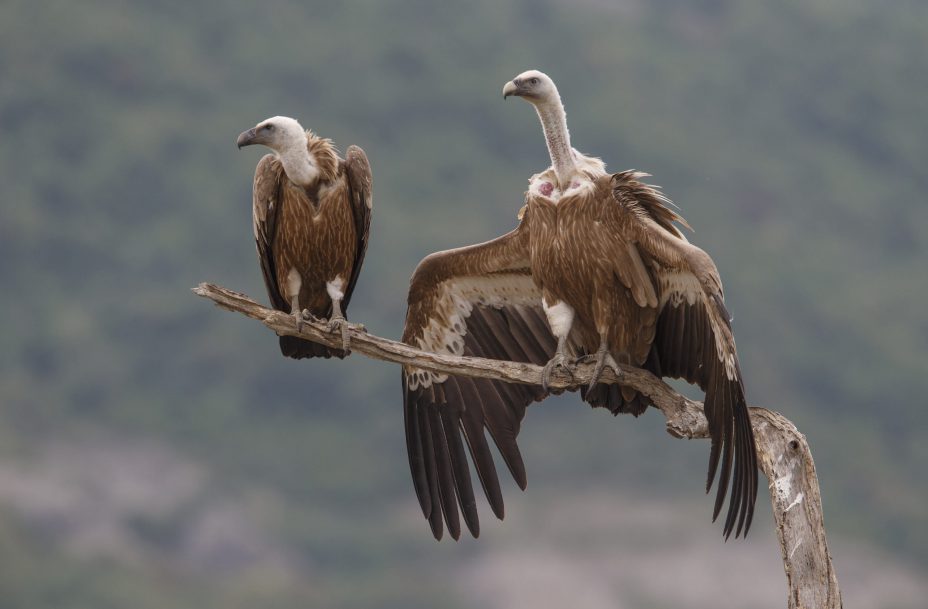The Griffon Vulture is the most social of Europe’s four vulture species, feeding in groups and roosting and breeding in large colonies that can host hundreds of individuals. Following its decline in the continent over the 20th Century, today it is Europe’s most populous vulture species, with approximately 35,000 breeding pairs.

STATUS
Following a decline in the 20th century as a result of wildlife poisoning, hunting and decreasing of food supplies, in recent year the species has increased dramatically in some areas, particularly in Spain, France and Portugal with the population in western Europe now numbering around 30,000 breeding pairs, 25,000 of which are found on the Iberian Peninsula. The eastern population of Griffon Vultures in Europe number around 600 pairs.
| Genus | Gyps fulvus |
|---|---|
| Common name in other languages | Dutch Vale Grier; German Gansegeier; French Vautour Fauve; Spanish Buitre Leonado; Portuguese Grifo; Swedish Gasgam |
| IUCN Red List Status | Least Concern |
| Left in the wild | 80,000 – 900,000 mature individuals worldwide (Birdlife International 2021) |
| Breeding pairs | 35,438 – 41,984 breeding pairs in Europe (Vulture Conservation Foundation 2022) |
| Breeding behaviour | Monogamous pairings |
| Range | Spain, Portugal, France, Italy, Croatia, Greece, Bulgaria, Serbia, Greece, North Macedonia |
| Habitat | Cliffs and rocky slopes and open shrub and grasslands |
| Size | 95-110cm |
| Wingspan | 2.4-2.8m |
| Weight | 6-11kg |
| Diet | Carrion feeding on large domestic and wild herbivores |
| Life expectancy | Up to 37 years in captivity |
FEATURES
The Griffon vulture is sand-coloured to dark brown, with a white head, neck and ruff. The primary- and tail feathers are dark brown to black. Young birds have a brown ruff and are darker in colour. The wings are long and wide and are resemble fingers.
DISTRIBUTION
Following a decline in the 20th century by poisoning, hunting and decreasing of food supplies, in recent year the species has increased dramatically in some areas, particularly in Spain, the French Pyrenees and Portugal. In Europe, the breeding population is between 19.000 and 21.000 pairs, with around 17.500 pairs in Spain and approximately 600 in France.
BEHAVIOUR
The Griffon vulture feeds mainly on the softer parts of carcasses, such as the muscles and viscera. Because of it’s long neck, this species can reach far into the carcass without snagging. Griffon vultures are very social in comparison to other vulture species. They forage in groups and breed in colonies on steep cliffs.
ACTION PLANS
Species Action Plans are very important strategic documents that frame the priorities for further species conservation work. They are created by conservation partners, scientists, charities, governments and local groups and are tools for identifying and prioritising measures to restore the populations of vultures across their range. They provide information about the status, ecology, threats and current conservation measures for each species of vulture and list key actions that are required to improve their conservation status.
The Vulture Conservation Foundation co-developed the Vulture Multi-Species Action Plan (Vulture MsAP), which was adopted by the United Nation’s Convention on the Conservation of Migratory Species of Wild Animals (CMS), aiming to conserve all 15 African-Eurasian vultures species, including the Griffon Vulture.